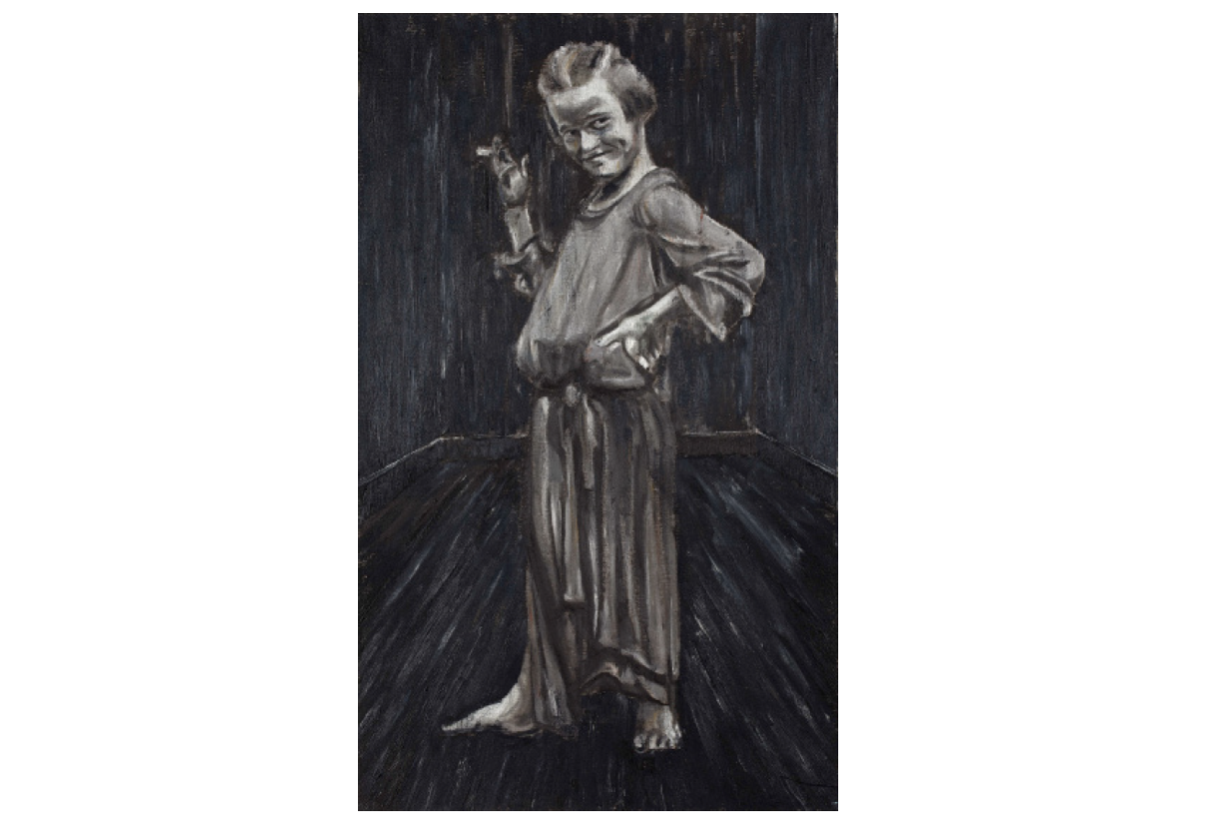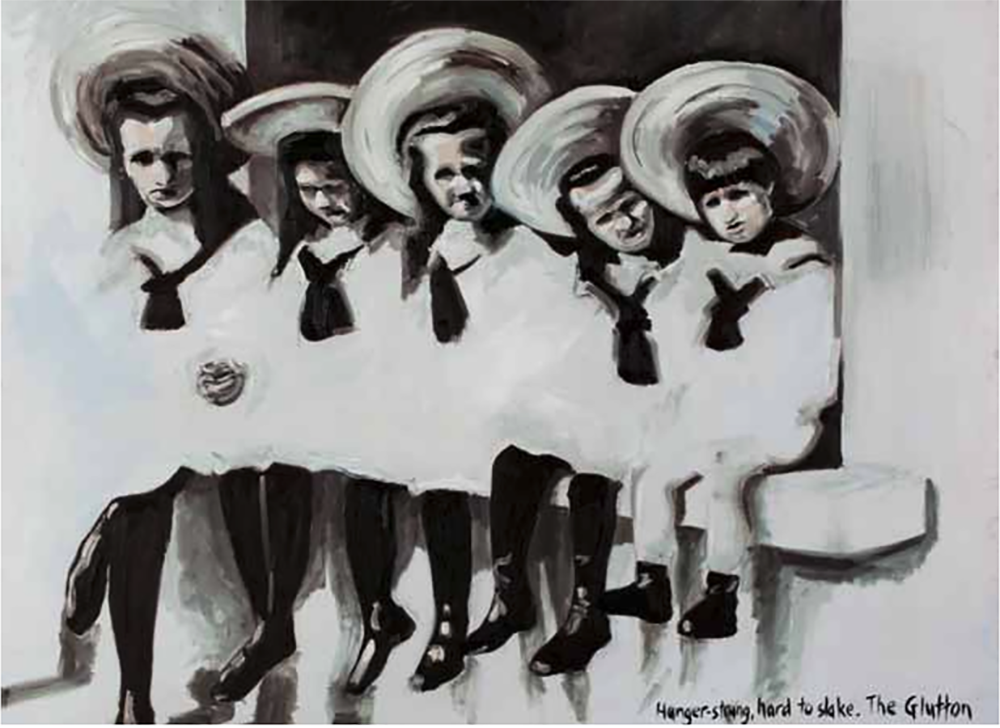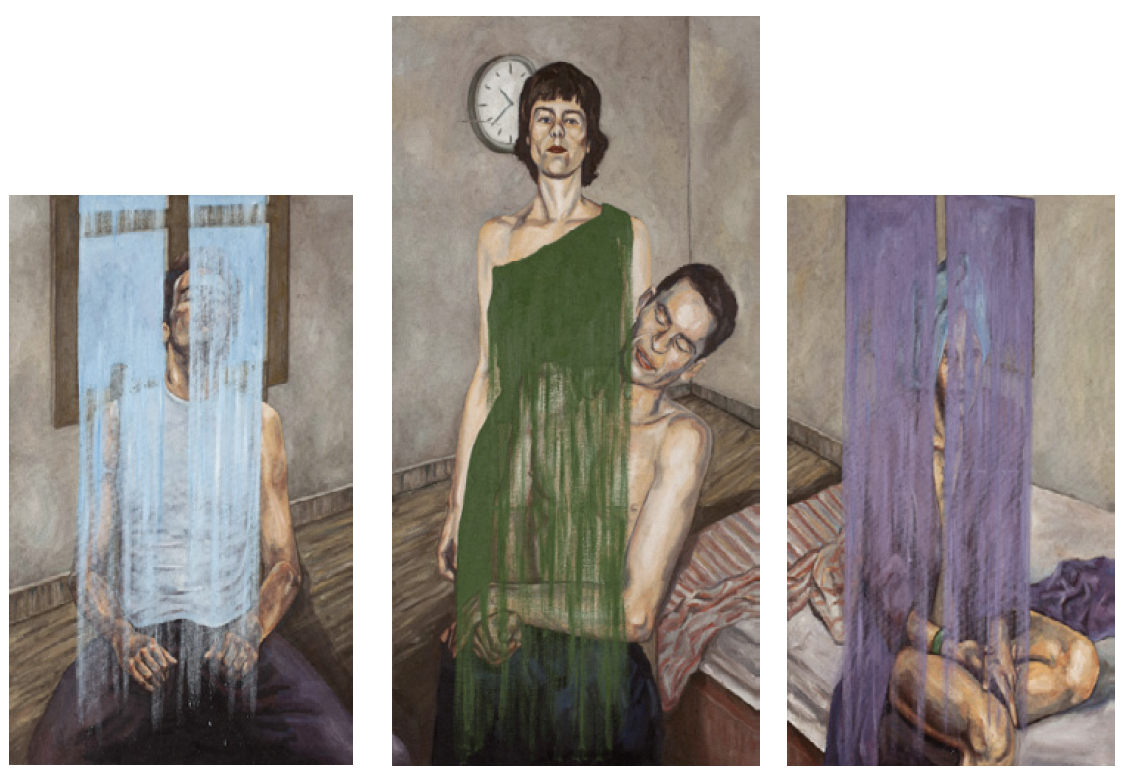“A CULTURE OF ENTITLEMENT”J S TAN SOLO EXHIBITION
Peking Art Associates is proud and privileged to present the first solo exhibition of the precocious and diverse artistic talent of Hong Kong-born, Beijing-raised J. S. Tan, now US-based at Brown University and The Rhode Island School of Design (RISD).
As an artist, and general blithe sybarite, Tan enjoys sustaining paradoxes in his work, whether it be the paradox of linear age or sanctimonious, yet disempowering institutions; he is also a paradox on many levels himself. Blessed with a prodigious painterly technique, he could be forgiven for resting on his laurels in creating lighter works of expression that would rival notable artists many, many years his senior in their fleshy renderings of naked men (Metamorphosis’ Prism) or seeping washes over images of rural outcasts (Boy Eating Corn). Moreover, with an Ivy League education, Tan has of course elected to step far beyond his cosy empirical world (also afforded him by fine looks and demeanour) in his examination of racist regimes, the devil of dogmatic religious servitude, and youth that use aggression as their means of empowerment. At turns, Tan’s subjects are anti-social, indignant and provocative in their desperate search for a sense of self and of belonging, which, ironically, ultimately takes the form of the subject’s further isolation. Paradoxes abound in Tan’s approach to his craft, through his resistance of categorization of his highly suggestive works – to the point of not precluding judgement by revealing his age. Instead he prefers to keep the viewer guessing, to interpret his works without prejudice of the subjects and little preconception of the artist whose hand has painted them. He is consistent in his resistance of labeling and ideological associations through his choice of predominantly elliptical titles that offer no clues. Indeed, as I learnt, Tan is of few words, and it is with some reluctance that he reveals the motives behind his works. This distance, concealment or reserve, call it what you will, is also partly the means by which Tan seeks to ‘capture’ the viewer psychologically (along with his experimentation with, at turns, spatial domination, even oppression, and apparent distortion). Children and juveniles therefore often appear as the unlikely faces of mature subjects, the not-so-innocent agents, brainwashed and manipulative at a frighteningly early age, engrossing and repelling the viewer simultaneously. Elsewhere, Tan presents a posture, which would be innocent or unassuming in itself, and infers something taboo which is not always immediately apparent to the viewer until it is ‘too late’ – and the viewer finds himself complicit, with illicit license. This is particularly striking in Girl with Red Shoes and Girl Falling (Homage to Marlene Dumas), both capitulating to voyeurism made darker due to the extreme innocence of its veneer. In this body of work such understatement actually affords the viewer himself the all too easy, but uneasy, experience of a proscribed claim of entitlement.
Tan seeks to arrest the viewer not only through his selection of subjects, but also the dark, haunting chords by which he gives them voices of expression. These may range from firm physicality to dream-like hue, but when he finds one of his figurative works “too pretty” he keenly sets about to redress this:- lithe young male figures splattered with what appears to be blood in the Cornucopia works; elsewhere an innocent-looking group of children in The Glutton captioned with a haunting line, re-worked by Tan, from a poem by Sylvia Plath; Tan has even been known to destroy works that did not contain “enough grit”. Other artists such as Francis Bacon notoriously destroyed some of his canvases, for reasons deeply personal, whilst Joan Miro slashed a body of his works in protest against Franco’s regime. Whatever his motives, internal, external, or both, Tan’s requisite treatment of his subjects, must, in his eyes, be intense and abrasive, that is not to say devoid of a certain kind of haunting beauty. In achieving this emotional or psychological control over the viewer, Tan is also interested in the possibility for the domination of physical spaces over his figures, in his words “being eaten up by space”, possible symbol of society consuming the individual, notably in his works Kneeling Man, Woman in Bath, and in Girl with Cigarette and Girl Falling (Homage to Marlene Dumas), where the build up of vertical lines almost consume the central figures. In the same vein, Tan has shown a fascination with the possibilities for application of forms of religious painting, and how they can literally and metaphorically constrict a subject. The Woman in Bath, for instance, is confined in an exaggerated arch, traditionally utilized to symbolize the sacred or holy in religious icon paintings and places of worship. Four Figures in a Room most obviously draws on the Christian triptych form, taken up by artists for non-religious purposes from Hieronymus Bosch to Francis Bacon, used by Tan here for “a kind of visual imprisonment”. In this work the artist also sought to question present-day social hierarchy by creating a contemporary reference to Chinese ‘ancestor’ paintings. Whilst Tan retains their stiff and rather listless characteristics, he entirely subverts their hierarchical application to noteworthy families of influence, and instead depicts the disempowered and disenfranchised, the slashed clock in the background a reference to legacies that will, or should, not be passed on. In the same scantily furnished room, the disconnected figures are only connected through the space they share. Tan’s treatment of spatial fields for oppressive effect is also related to one of his chief stylistic processes. Just as the space “eats into the figure”, so too Tan’s process of overlay of paint with a charged brush, his final undertaking upon full rendering of the image. This device of simultaneous haziness and subconscious reality with almost dream-like effect is predominant in Four Figures in a Room, and further, in Nun with Child and Kneeling Man, it implies a form of control of dogma or environment over their respective subjects. Further expressive tools of note are Tan’s restrictive palette, and elongated, angular brushstrokes, epitomized in, amongst others, The Glutton. This confident application of the pigment is seen repeatedly, and in large scale, through Metamorphosis’ Prism, The Janitor and Anna, a large oil on canvas diptych, presenting two angles of a friend of the artist in two poses, one that questions (at left), and then seemingly turns to defiance.
It is testament to J.S. Tan’s artistic prowess that he is able to produce works of such depth of expression without artifice, fussiness nor cliché.
– E. S. de W. P.


